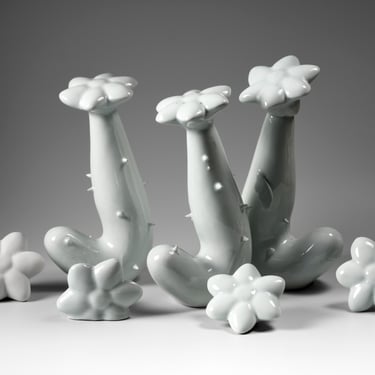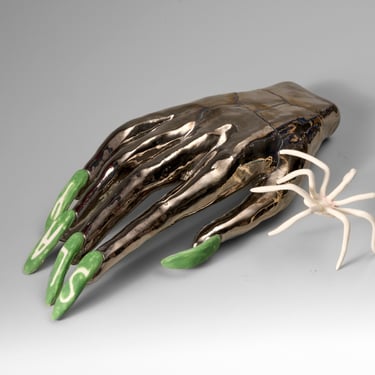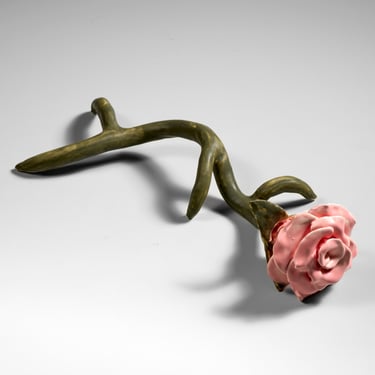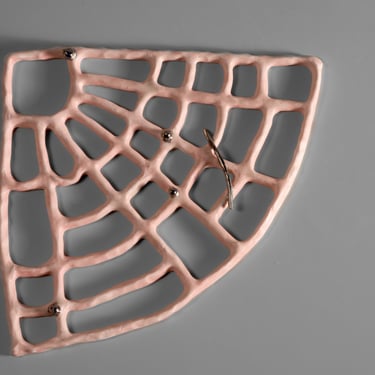




by the shimmering of the moon she saw ...
Foto: Gvido Kajons
In the exhibition "By the Shimmering of the Moon She Saw," I draw inspiration from the Italian folktale "The Handless Girl"—a tale of trauma, exile, and transformation. This archetypal narrative forms the basis of an installation that transports the viewer to a magical space: a forest with metal trees and porcelain fruits filled with the seeds of new life. Through the juxtaposition of two different materials, I express tensions associated with bodily memory, vulnerability, and the desire for restoration. Exploring the rich history of porcelain, its connection to power, tradition, and taste, I use its fragility and plasticity to address bodily vulnerability and female experience. A grotesque pair of shoes becomes a symbol of the heaviness of the journey: it is difficult to walk in them. These shoes rub, leave marks, and require effort—just like the process of growing up, healing, and returning to oneself. Silent ceramic flowers—like witnesses, like choirs—observe the process of transformation.
The installation features a web and a spider. The spider weaves a home anywhere, from whatever it has. Its web is fragile but precise. "Networking is both a feminist practice and a strategy for multinational corporations. Weaving is the work of oppositional cyborgs," Donna Haraway, "A Cyborg Manifesto."
Like a spider, I construct my space, my identity, in motion—between countries and languages. This thread—almost imperceptible, yet powerful—connects memory, trauma, a sense of home, and the desire for freedom. It holds its shape even as everything around it changes.
The spaces I create invite the viewer to slow down, observe, and feel the quiet process of metamorphosis.
In the exhibition "By the Shimmering of the Moon She Saw," I address questions of identity through the prism of mythological images and symbols, creating a visual language in which the personal intertwines with myth and evokes contemplative participation.
The exhibition is financially supported by the Riga City State Municipality and the State Culture Capital Foundation.